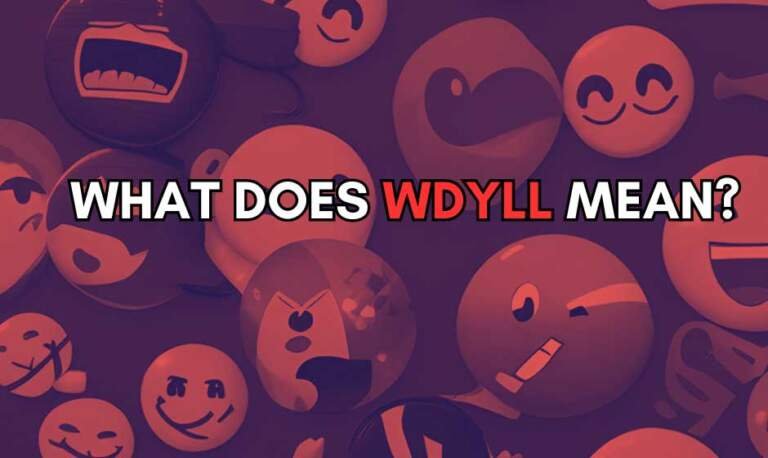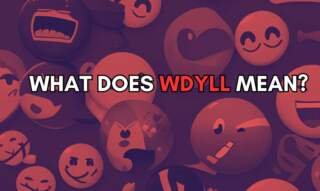Intelligence doesn’t shield people from believing psychological myths. Smart individuals routinely apply debunked principles about brain capacity, learning, anger, and relationships to major life decisions. They do this despite decades of contradictory evidence.
Three mechanisms sustain these misconceptions even among sophisticated audiences: media oversimplification, confirmation bias, and a preference for simplicity.
Recent research reveals this paradox perfectly. Prof. Stephen Reicher, an expert in group behavior at the University of St Andrews, and Prof. Clifford Stott, a specialist in the psychology of crowds at Keele University, challenge the persistent myth of bystander apathy. Their findings reveal that collective heroism is a natural human response during emergencies. This was evident during the 7/7 attacks and the Leytonstone tube attack.
Despite clear evidence, the myth continues to influence emergency planning and public consciousness. Addressing these misconceptions requires comprehensive educational platforms, self-assessment tools, and practical frameworks that tackle their persistence and real-world consequences.
Five Myths That Shape Decisions
Each of these myths turns complex behavioral patterns into simple rules. Take the first one: humans only use 10% of their brain capacity. This suggests there’s untapped potential just waiting to be unlocked. Actually, neuroimaging shows the entire brain stays active, even during sleep. The misconception drives expensive ‘brain training’ programs that promise cognitive enhancement without any domain-specific practice.
The second myth? Learning styles need matched teaching methods. Research consistently shows mixed-method instruction beats style-matched approaches every time. Such beliefs shape how schools spend money and limits kids’ exposure to different ways of learning.
Here’s a third one that’s everywhere: the catharsis hypothesis. It claims venting anger reduces aggression. Studies show expressing anger often increases it instead. That affects how workplaces handle conflict and how people manage personal relationships.
Another stubborn myth suggests opposites attract in relationships. Research reveals that similarity in values, interests, and personality traits predicts relationship satisfaction better than complementarity. The belief affects how people choose partners and how counselors approach therapy.
Finally, there’s the bystander apathy myth. It persists despite evidence from Reicher and Stott showing people naturally help in emergencies.
You’d think five thoroughly debunked myths would stay debunked.
Instead, they keep surfacing in boardrooms, parenting decisions, and relationship advice like intellectual zombies. Emergency planning often assumes worst-case individual behavior rather than likely collective cooperation. The research by Reicher and Stott suggests that empowering individuals to act on their natural helping tendencies could align institutional responses with evidence showing cooperation as typical human behavior during emergencies. These myths don’t operate alone—they shape important decisions across multiple life areas.
Real-World Consequences of Myths
These five myths translate into concrete costs across parenting, workplace management, and personal relationships. In parenting, myths about learning styles lead parents to limit children’s exposure to diverse instructional methods. Parents convinced their child is a ‘visual learner’ may resist other activities that enhance retention. Brain capacity myths create pressure for constant stimulation and unrealistic developmental expectations, leading to investments in ‘brain training’ subscriptions.
In workplace management, beliefs about anger venting shape conflict resolution policies that escalate tensions. Meetings intended to ‘clear the air’ often rehearse hostile patterns. Nothing quite says ‘corporate wisdom’ like scheduling a team meeting to hash out differences and watching everyone leave angrier than when they arrived. Personality myths affect hiring and team composition strategies without considering context-dependent behavior. Emergency response policies assume bystander apathy when natural cooperation could be empowered.
In personal goals and relationships, brain capacity myths fuel investments in ‘potential unlocking’ programs with minimal evidence. The belief in ‘opposites attract’ influences partner selection against compatibility evidence. Emotional expression myths create destructive communication patterns in relationships, where venting increases hostility rather than clearing tension.
These consequences compound systematically.
These myths don’t operate in isolation but form a system of flawed heuristics. A manager who believes in both anger catharsis and categorical personality types may implement conflict resolution and team composition strategies that compound each other’s failures. The stakes extend beyond individual decisions to systematic institutional approaches built on flawed psychological foundations. To understand why these flawed shortcuts persist despite their high cost, we need to examine the forces that keep them alive.

Why Myths Persist
Media oversimplification favors simple narratives over nuanced findings. The catharsis myth persists because ‘express your anger to feel better’ fits headline formats better than complex research findings. Myths like ‘unlock unused brain capacity’ offer clear stories that media amplifies.
Confirmation bias leads people to notice experiences supporting existing beliefs while dismissing contradictory evidence. Someone believing in learning styles will remember times visual presentations helped but forget successes with other methods. Intelligent people often construct sophisticated justifications for belief-confirming interpretations.
Psychology’s inherent context-dependence makes simple myths more appealing than accurate principles. Anyone who’s studied human behavior knows the frustration of never getting clean answers. Jade Tellez, a graduate student studying counseling, highlights this perfectly: “One of the main phrases that we use, especially in this major, is ‘it depends,’ so the answer always depends on something. With programming, there’s always an answer at the end of the equation, or the end of the script, and, with people, you might say this is the answer one day and the next day it’ll be a different answer.” This variability creates discomfort resolved by myths offering consistent predictability.
These forces create resilient misconceptions that passive exposure to corrections rarely overcomes. Each mechanism requires specific countermeasures: systematic exposure to counteract filtering, complexity familiarity to reduce simplicity preference, structured repetition to overcome media’s simple-narrative advantage. Casual debunking fails because correction requires systematic engagement through integrated approaches targeting each persistence mechanism.
Building Knowledge Through Engagement
Overcoming confirmation bias requires more than passive exposure to corrections. People dismiss corrections as exceptions rather than integrating them into their belief systems. Comprehensive question bank systems force repeated engagement with research-based evidence across varied contexts, preventing selective attention to comfortable information.
Revision Village provides one example of this approach through its comprehensive online revision platform for International Baccalaureate (IB) Diploma students. The platform offers thousands of syllabus-aligned questions with mark schemes and video solutions across multiple subjects including IB Psychology.
Their system works by requiring students to engage repeatedly with problems covering psychological concepts and research-based principles aligned with rigorous academic standards. This repeated engagement systematically exposes students to evidence-based principles contradicting popular myths. Look, you can’t just ignore the uncomfortable research when it’s the only path to the right answer.
The platform’s analytics track progress and identify areas requiring additional focus. This prevents students from selectively avoiding material that contradicts their existing beliefs
The platform serves IB students globally, showing how repeated practice can work at scale. This question bank approach directly counters confirmation bias by eliminating selective engagement with evidence and replacing intuitive myths with accurate mental models through systematic practice. With confirmation bias tackled through repeated practice, the next challenge is our craving for neat, one-size-fits-all labels.
Discovering Complexity Through Self-Awareness
We’re drawn to simple explanations, even when they’re wrong. It’s easier to believe neat categories than messy realities. Structured self-assessment tools cut through this by showing us psychological complexity firsthand.
Psychology Today works on this problem with online self-tests that explore psychological concepts. Users can examine personality dimensions, mental health symptoms, conflict styles, and romantic impulses through these assessments.
People discover that psychological responses shift across different contexts and relationships. Simple labels suddenly feel inadequate.
The system exposes users to how multidimensional psychological constructs really are. This counters our tendency toward simplistic categorical thinking. Why does experiencing complexity beat just reading about it? Personal discovery makes the flaws in simple categories impossible to ignore. Abstract knowledge can’t compete with that kind of revelation.
These tools become gateways to recognizing why popular myths fall short. They transform psychological complexity from something you know about into something you’ve actually experienced. That experiential shift directly challenges our preference for oversimplified explanations. Having seen complexity in action, we still need ways to turn that insight into real-world choices.
Applying Knowledge Through Frameworks
Systematic education builds accurate knowledge. But here’s the problem: without application frameworks, people still don’t know how to translate understanding into actual behavior change. You can learn all the research in the world and still freeze up when emotions run high.
The School of Life shows one way to bridge this gap. Founded by philosopher and author Alain de Botton, it works on enhancing emotional intelligence and self-understanding through classes, books, and workshops.
Their approach focuses on vulnerability, emotional life, and the messy complexity of human nature. These are exactly the areas where myths about emotional control do the most damage. Instead of pretending we can just think our way out of difficult feelings, they provide structured approaches for situations where folk psychology usually takes over.
This completes the correction pathway. You start with recognizing myths, move through systematic education, and end up with practical tools you can actually use. The School of Life addresses that crucial gap between knowing what research says and implementing evidence-based responses when life gets complicated. Armed with these frameworks, we can now pin down concrete strategies for spotting—and swapping out—those myths.
Spotting Myths and Finding Alternatives
Smart people can spot when myths influence decisions by watching for telltale signs. Principles that sound absolute rather than probabilistic should raise red flags. Context-independent rules rarely apply to human behavior.
Evidence-based alternatives exist for each myth. Varied instruction beats learning styles. Delayed response works better than anger expression. Similarity predicts relationship satisfaction. Skill development trumps brain capacity unlocking. Collective cooperation replaces bystander apathy assumptions.
These alternatives work best within integrated systems.
Three correction pathways form this system: systematic educational platforms counter confirmation bias, self-assessment tools counter simplicity preference, and practical frameworks bridge knowledge into behavior. These resource channels marry structured education with hands-on application, equipping you to replace myth-based shortcuts with accurate mental models. All that remains is to bring our intelligence and these tools into a single, evidence-driven approach.
Intelligence and Systematic Engagement
Reicher and Stott’s research on bystander apathy shows a broader pattern. Clear evidence exists, yet myths stick around because of persistence mechanisms that affect smart people just as much. Five myths we’ve examined shape important decisions across different areas. Systematic engagement through integrated approaches gives us a framework for swapping myths with accurate mental models.
Recognizing the limits of intuitive psychology isn’t an attack on intelligence. It’s just accepting that human behavior is complex enough to require commitment to evidence-based reasoning. The bystander apathy myth doesn’t persist because we lack research. It persists because correction requires systematic engagement against our natural cognitive preferences.
For intelligent people who’re used to trusting their reasoning, accepting that psychological intuition systematically misleads takes humility.
That’s tough when you’re used to being right about most things. This humility, combined with systematic engagement through structured platforms, enables a shift from myth-based shortcuts to evidence-based understanding.
The intelligence paradox isn’t a flaw. It’s a feature that demands better tools for navigating psychological complexity.
So next time a neat psychological ‘rule’ tempts you, pause—and use the tools we’ve mapped out to outsmart the myths and make smarter choices, starting now.











